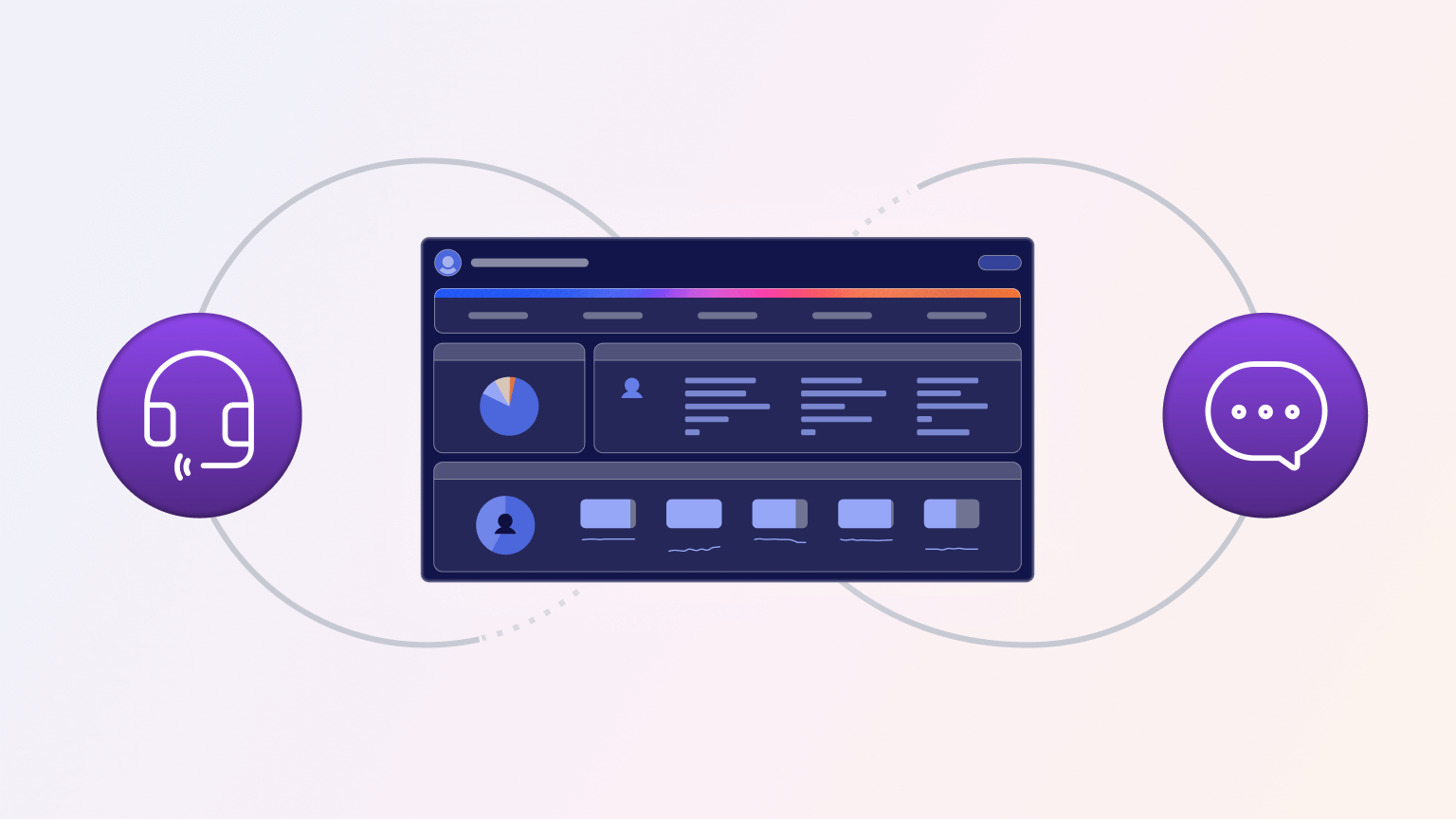article
Customer interaction management: Navigating the complexity of omnichannel intent
Dive deeper into LivePerson’s Voice to Digital Playbook
August 13, 2024 • 5 minutes

Successfully adopting a best-of-breed approach to Contact Center as a Service solutions relies on understanding the intricacies of customer intent across various channels. The journey a customer chooses to take to interact with your brand will greatly vary depending on their intent. Let’s delve further into the most common kinds of intent to help you build the right omnichannel experiences into your customer interaction management.
The power of customer and buyer intent
In customer interactions, intent is the driving force behind a person’s decision to reach out to a brand. It’s the underlying reason or goal that compels them to make contact, whether it’s to find information, solve a problem, buy a product, or share their thoughts. To deliver relevant, timely, and satisfying support, brands must have a clear understanding of customer and buyer intent.
Recognizing and harnessing customer intent data helps brands provide a more personalized experience. For instance, if a customer needs to resolve a technical issue, they may require detailed guidance and support, which might be better handled through a phone call with a support agent. Conversely, a customer looking to check the status of an order may prefer the convenience of a self-service portal or an AI chatbot. By discerning these nuances, brands can tailor their responses and omnichannel customer engagement strategies, enhancing customer satisfaction and loyalty.
Decoding today’s complex customer journeys
A customer’s journey is interconnected and dynamic, often involving multiple touchpoints and intents, each with varying levels of urgency, emotion, and value. Let’s examine some of the challenges we face in managing customer interactions.
- Complex journeys: Customers may start their interaction on one channel, switch to another, and then possibly return to the original channel. For example, a customer might begin by searching for information on a website, then move to a live chat for clarification, and later call customer service for a final resolution. Tracking and maintaining context across these touchpoints is crucial to ensure a seamless customer experience. This requires robust integration and communication between different channels and systems.
- Diverse intents: Customer intents range from simple information gathering to high-stakes purchase decisions, password resets, or urgent issue resolution. Each intent requires a different approach and level of support. A customer researching product details has different needs compared to one resolving billing issues. Identifying these intents early can help direct customers to the appropriate customer service processes and resources swiftly and effectively.
- Fragmented channels: While customers have multiple channels to seek help, most are not intentionally designed to solve their specific problems efficiently. This leads to frustration and disjointed experiences. For example, a customer might find that the information available on a mobile app differs from what’s available on a desktop site. Ensuring consistency and coherence across all channels is vital for a smooth customer journey, and effective customer interaction management can help.
Delivering connected experiences to meet customer expectations
To navigate this complexity and deliver connected customer experiences, brands must focus on three key aspects for customer interaction management, which we will dive into now.
- Understand: Gain a deep understanding of the customer journey and identify the various touchpoints where customers interact with your brand. This includes mapping out the different channels, devices, and stages of the journey. By comprehensively understanding these touchpoints for customer engagement, brands can better anticipate customer behavior and needs to streamline interactions.
- Recognize: Acknowledge the diverse intents driving customer interactions. Some common intents include information gathering, purchase decision-making, password resets, and issue resolution. Each intent carries a different level of urgency, emotion, and potential value for the brand. Recognizing these intents helps in tailoring responses appropriately, ensuring that customers feel understood and valued.
- Align: Match the communication channels with the appropriate intents to positively impact both customer satisfaction and business success. For example, a simple password reset may be best handled through self-service on a digital channel, while complex technical issues may require live customer support agents on the phone. By aligning intents with the most suitable channels, brands can improve efficiency and enhance the customer experience.
Evaluating customer intent: The key criteria for channel alignment

To effectively align channels with intents and better manage customer interactions, brands must evaluate each intent based on certain criteria:
- Complexity: How complex is the issue or question? Can it be easily resolved through self-service, or does it require human intervention? Complex issues often need more detailed and personalized assistance, while straightforward queries can be quickly handled through automated systems.
- Urgency: How time-sensitive is the matter? Is an immediate response critical, or can it be addressed within a reasonable timeframe? Urgent issues demand swift action and may necessitate direct human interaction and phone calls, whereas non-urgent matters can be managed through automated processes.
- Emotion: Is the customer interaction emotionally charged, such as a complaint or a high-stakes decision? Emotional situations often benefit from the human touch and empathy that voice channels provide. For instance, a frustrated customer may appreciate a compassionate conversation with a support agent rather than navigating through an impersonal automated system.
- Value: What is the potential value of the interaction for both the customer and the brand? High-value interactions, such as sales or retention, may warrant prioritized support and specialized resources. Investing in high-value interactions can lead to increased customer loyalty and long-term profitability.
Deliver the right experience. Drive business success.
To deliver the connected, personalized experiences that customers expect, you need to understand the complexity of omnichannel intent and align channels accordingly. With a better understanding of how to manage customer interactions, you can optimize resources and drive business success. This strategic alignment not only enhances customer satisfaction but also contributes to a more efficient and effective customer service operation.
Want to learn even more about how to deliver world-class, omnichannel customer interaction management?
Then you need our Voice to Digital playbook.


